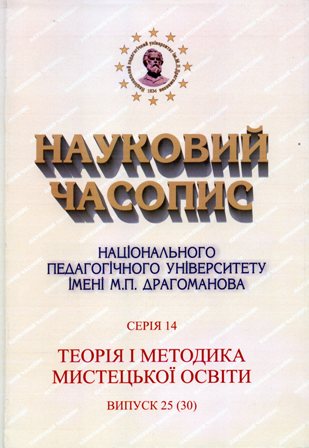Development of Spanish organ school in epoch of Renaissance
Keywords:
key instrument organ; organ art; duties of organist; author collections of professional music; cteation of Spanish musicians (T. de Santa María, F. Guerrero, T.L. de Victoria)Abstract
In the period of early Renaissance construction of organs in Spain was under the influence of foreign organ-builders. This direction has achieved significant success and brought the form of the instrument close to the form of the present day. The following types of organs are known: Portatives (órgano de mano) were taken during processions; Positives (órgano de mesa) adorned leisure and taught youth; Large church organs accompanied the service. The cathedral was a scientific and cultural center, and it’s chapel – the musical heart of the temple. The organist accompanies worship, performs solo fragments, accompanies the choir, and also has to know the composition, improvizing during the service. Outstanding organists Francisco Correa de Araujo, Pablo Brunа, Juan Bautista Cabanilles left a rich heritage. The organ had a big role in involving parishioners: in addition to the accompaniment of the service organist taught gifted children to play organ. Many functions of court and church organists coincide. The kings of Spain – the Habsburgs, the Bourbons – were genuinely enthusiastic about music, and their chapels of the best musicians combine composing, performing and teaching activities: the pupils of church organists were boys-choristers and the pupils of court organists were monarch's heirs and wives. The analysis of musical works of that time builds a genre system that comes from the XVI-th century, when the differences between the repertoire for different instruments were not determined; the boundaries between elite and popular music, didn’t exist and even a hard line in instrumental music between secular and church. The most important genre of organ music was tiento: improvisational, where accords and passages were combined; imitational, based on polyphonic writing. In the 17th century, tiento medio de registro was created using a solo voice, and tiento de falsas with chromatic. There were also variation genres defined: differentiation, gloss, discante. Displaying the type of musical thinking that was typical for the Renaissance, appeared famous Spanish glossing – the masterful addition of ornamental sounds to melodic lines.
References
Martynov, I. I. (1977). Muzyka Ispanii. [Music of Spain]. Moscow: Sovetskiy kompozitor. [in Russian].
Moiseyeva, M. A. (2011) Organnoye iskusstvo Ispanii epokhi Vysokogo Vozrozhdeniya i Barokko. [Spanish Organ Art of High Renaissance and Baroque Era]. Abstract of dissertation. Moscow. [in Russian].
Cabezón, H. (1578). “Declaracion de la cifra que eneste libro de vsa”. Obras de música para arpa, tecla y vihuela. Madrid.
Collins Judd, C. (2000), Reading Renaissance Music Theory: Hearing with the Eyes. Cambridge: Cambridge University Press.
Lamana, J. M. (1975), Los instrumentos musicales en la España Renacentista. Barcelona.
Esther-Sala, María A. (1979), La ornamentación en la música de tecla española del siglo XVII. Actas del I Congreso Nacional de Musicología. Zaragoza: Institución Fernando el Católico, pp.179-196.
Martorell, O. and Valls, M. (1985). Síntesi històrica de la música catalana. Barcelona: Els Llibres de la Frontera.
Stevenson, Robert M. (1991), Tomas Luis de Victoria: Unique Spanish Genius. Inter-American Music Review, 12/1. pp. 1-100.
Tello León and Francisco José, (1974). La teoría española de la música en los siglos XVII y XVIII, Madrid.

